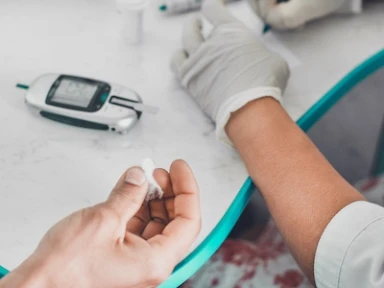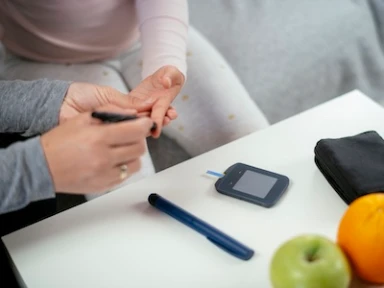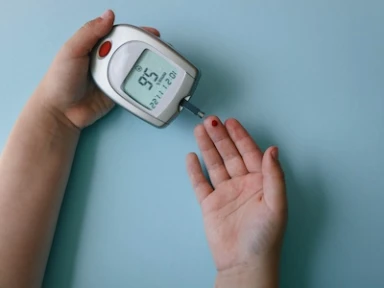Inside Diabetes: ATTD Edition | Type 2 Diabetes
The 17th International Conference on Advanced Technologies and Treatments for Diabetes (ATTD) concluded on March 9, 2024.
The congress was a resounding success, drawing more than 5000 participants from 96 countries around the world. Attendees had the opportunity to engage with leading experts, researchers, and industry professionals to discuss advancements in diabetes care, including new technologies, treatment modalities, and research findings.
The conference covered a broad spectrum of topics such as CGM, insulin delivery systems, digital health solutions, and emerging therapies. We are delighted to present some notable highlights distilled from all four days of ATTD 2024, with a particular emphasis on T2D.
The art of perspective: advancing type 2 diabetes care with treatment intensification and technology
Session chair: Tadej Battelino
Speakers: Alexandria Ratzki-Leewing, Riccardo Candido, Francesco Giorgino, Robert Ritzel, Partha Kar, and Julia K. Mader
- Managing hypoglycemia is crucial for optimal insulin use in PwT2D, requiring a balance between glycemic control benefits and hypoglycemia risks.
- Timely intensification of treatment with BI, preferably second-generation analogs, is important for those with sub-optimally controlled T2D on GLP-1 RAs for effective diabetes management.
- Once-daily FRCs offer a simple alternative to complex insulin regimens for PwT2D in need of further therapeutic advancement.
- Patient barriers to BI therapy intensification include regimen complexity, fear of hypoglycemia, weight gain, and misconceptions about insulin use. In addition to holistic diabetes management, incorporating CGM metrics is important to promote effective communication and provide transparency with easy integration of BI.
- CGM plays a vital role in simplifying diabetes self-management, promoting effective communication, and facilitating collaborative decision-making between HCPs and PwT2D. More evidence is needed, especially among PwT2D. Global barriers to CGM integration include accessibility and affordability issues.
- Appropriate language use is essential in fostering a positive HCP-patient relationship and optimal clinical outcomes. Various factors can influence adherence to insulin therapy, potentially leading to suboptimal concordance. Leveraging digital platforms for diabetes management offers avenues to enhance support for PwD by addressing obstacles to self-management.
- Smart connected insulin pens and digital solutions, integrated into a cloud-based ecosystem, enhance clinical conversations and satisfaction levels among PwD, caregivers, and HCPs, leading to individualized and person-centric diabetes care and optimal health outcomes.
CGM diabetes quality measures
Session chairs: Guillermo Arreaza-Rubin and Revital Nimri
Speakers: Elisabeth Selvin and Gregg Simonson
Should HbA1c still be a diagnostic criterion for diabetes in 2024?
- Although various factors interfere with the assays used to measure HbA1c, data show that there is a robust association between HbA1c level and long-term microvascular complications. Due to the lack of standardized CGM metrics for diabetes diagnosis, using and educating patients about using laboratory HbA1c along with CGM mean glucose.
CGM (GMI/TIR) as diabetes quality metrics
- While HbA1c possesses characteristics of a good quality measure, it may be impacted by various factors and does not reflect hypoglycemia or variability. Similarly, GMI and average glucose levels may serve as good glycemic metrics; however, there is a need to go beyond these measures. TIR/TBR data could be an excellent diabetes management metric and evolving quality measure.
Hypoglycemia - any progress?
Session chairs: Stephanie A. Amiel and Fernando Gomez-Peralta
Speakers: Stephanie A. Amiel and Simon Heller
CGM detection of hypoglycemia in diabetes management
- CGM has played an important role in increasing the recognition of hypoglycemia events. Data from HypoMETRICS study showed that hypoglycemia, whether symptomatic or asymptomatic, may have a negative impact on daily functioning. Additionally, CGM alerts for non-harmful events could be detrimental and requires further personalization.
Should the classification of hypoglycemia be updated?
- Hypo-RESOLVE project investigates patient engagement and interactions via 8 work packages. The association between hypoglycemic events and T1D or T2D varies, and there is an increased risk of adverse events as blood glucose falls to lower levels during hypoglycemic events.
Effect of iGlarLixi on continuous glucose monitoring-measured time in range in insulin-naive adults with suboptimally controlled type 2 diabetes (HbA1c ≥11.7–18.1 mmol/l/ 9–13%)
Presenter: Juan P. Frias
- In PwT2D suboptimally controlled on BI, treatment with iGlarLixi significantly improved glycemic control. TIR increased by 26.2%, while TBR remained within the recommended targets. The coefficient of variation (%) also remained below the recommended target of 36%.
- iGlarLixi was well tolerated with no increased risk of hypoglycemia, as evidenced by CGM data.
Decision support and automated insulin delivery for the management of type 2 diabetes
Session chair: Lia Bally
Presenter: Lia Bally
Virtual clinic for insulin therapy in type 2 diabetes
- Adopting a virtual clinic approach envisions a future characterized by scalable, accessible, and adaptive insulin treatment for T2D through connected devices and smart insulin dosing algorithms.
- Nevertheless, a significant barrier exists in the form of a lack of interoperability, necessitating collaboration with primary care providers. The successful implementation of this approach, especially with fully automated insulin dosing technologies, mandates additional engagement with individual patients.
Advances in treating diabetes
Session chairs: Peter Adolfsson
Presenter: Peter Adolfsson, Fernando Gomez-Peralta, Christophe De Block, Andrea Facchinetti, and Neal Kaufman
- Connected pens and caps and smart MDI system offer potential benefits, such as keeping track of injection times, and doses and integrating the data to a care platform. Smart digital solutions may empower PwD to better optimize BI dose and manage their diabetes, enabling an individualized approach for achieving glycemic targets.
- Recently published expert recommendations by the Spanish Endocrinology and Nutrition Society suggest providing guidance on the possible usage of technology for individual user and families, diabetes team, institutional user, and usage in clinical research.
- The continuous ketone monitoring may aid in the early detection of diabetes ketoacidosis. The current continuous ketone monitoring systems are less effective and require novel algorithms based on ketone data with ketone specific alarms for high ketone levels, potentially enhancing QoL in PwD. Additionally, the continuous ketone monitoring sensor are more accurate than ketone strips used for ketone monitoring in PwT1D.
- The digital twin technologies provide personalized and tailored treatment for PwD. The digital twin technology is expected to offer real-time, robust, precise, and effective medical services in diagnosis, treatment, monitoring, trauma management, and drug development of diabetes. The ReplayBG, a digital twin tool, can be used for optimizing and personalizing T1D therapy.
BI, basal insulin; CGM, continuous glucose monitoring; FRC, fixed-ratio combination; GLP-1 RA, glucagon-like peptide-1 receptor agonist; GMI, glucose management indicator; HbA1c, glycated hemoglobin; HCP, healthcare professional; MDI, multiple daily injection; PwD, people with diabetes; PwT1D, people with T1D; PwT2D, people with T2D; TBR, time below range; TIR, time in range; TITR, time in target range; T1D, type 1 diabetes; T2D, type 2 diabetes.




